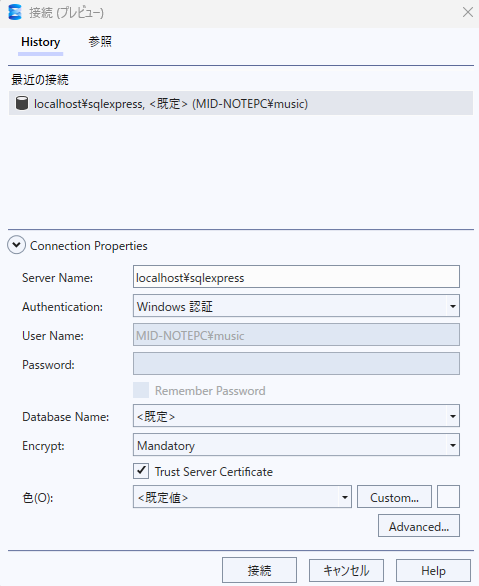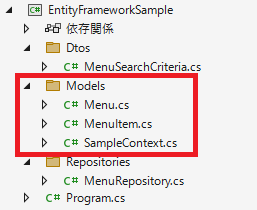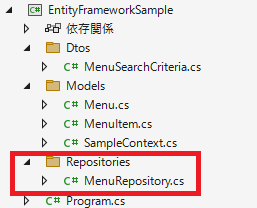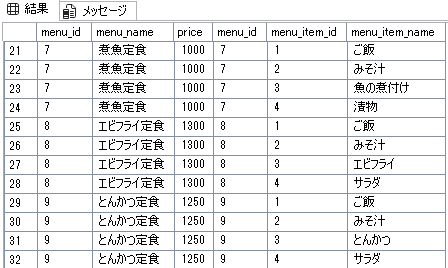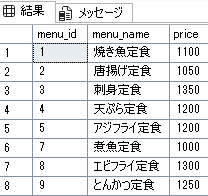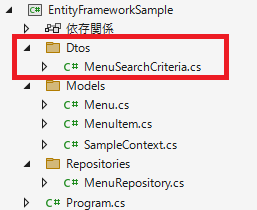Boost Productivity with C# and Entity Framework! A Comprehensive Guide from Basics to Practice
Back to TopTo reach a broader audience, this article has been translated from Japanese.
You can find the original version here.
When developing with C#, Entity Framework is the standard ORM. While Entity Framework can be somewhat difficult to understand, it offers high development efficiency.
Furthermore, since the advent of ASP.NET Core, Entity Framework has evolved into Entity Framework Core, further increasing development efficiency.
When writing this article, I used Entity Framework again after a long time and realized just how easy development can be. This should significantly improve productivity.
Therefore, I will explain everything from setting up Entity Framework to how to use it, along with sample code.
I hope this article is helpful not only for those who want to learn how to use Entity Framework, but also for those considering introducing Entity Framework into their development projects.
Overview of Entity Framework and Environment Setup
#Entity Framework is an ORM. It allows you to access SQL Server, SQLite, MySQL, PostgreSQL, Azure Cosmos DB, and more using C#.
Like typical ORMs, you create model classes corresponding to database tables and use methods provided by Entity Framework, such as Select and Insert, to manipulate the database.
Installing Entity Framework
#To use Entity Framework, you need to install it.
If you are using Visual Studio, install the following packages from NuGet. In the sample for this article, we are using SQL Server Express.
- EntityFrameworkCore
- EntityFrameworkCore.SqlServer
- EntityFrameworkCore.Tools
Install EntityFrameworkCore. The non-Core EntityFramework package is for .NET v4.x.
If you are using VSCode, navigate to your project folder and run the following commands to install:
dotnet add package Microsoft.EntityFrameworkCore
dotnet add package Microsoft.EntityFrameworkCore.SqlServer
dotnet add package Microsoft.EntityFrameworkCore.Tools
If the dotnet command is not found or you haven't set up a C# development environment in VSCode, please refer to this article for environment setup:
Installing SQL Server Express
#This sample uses SQL Server Express. If you have not installed SQL Server, please install it. Microsoft’s download site is here:
https://www.microsoft.com/ja-jp/download/details.aspx?id=104781
Next, install SQL Server Management Studio. Microsoft’s download site is here:
https://learn.microsoft.com/ja-jp/ssms/install/install
Once you have installed Management Studio, let's log in.
For Server name, enter localhost\sqlexpress; for Authentication type, select Windows Authentication; and check Trust Server Certificate.
As a note, there are three types of SQL Server authentication methods.
- Windows Authentication, which logs in using a Windows user.
- SQL Server Authentication, the general method that logs in with a database-registered user and password.
- Mixed Mode Authentication, which uses both.
For local development, Windows Authentication is easiest.
Preparing Data and DB Access Processes
#Sample Data Used in This Article
#In this article, we will use a set meal restaurant’s menu as sample data. The data may have some curious points, but please bear with it since it's just a sample.
Here is the CSV data:
menu_id,menu_name,price
1,Grilled Fish Set Meal,1000
2,Fried Chicken Set Meal,900
3,Sashimi Set Meal,1200
4,Tempura Set Meal,1100
5,Fried Horse Mackerel Set Meal,1100
menu_id,menu_item_id,menu_item_name
1,1,Rice
1,2,Miso Soup
1,3,Salt-Grilled Salmon
1,4,Pickles
2,1,Rice
2,2,Miso Soup
2,3,Fried Chicken
2,4,Salad
3,1,Rice
3,2,Miso Soup
3,3,Sashimi
3,4,Pickles
4,1,Rice
4,2,Miso Soup
4,3,Tempura
4,4,Pickles
5,1,Rice
5,2,Miso Soup
5,3,Fried Horse Mackerel
5,4,Salad
DDL for Sample Data
#The DDL to create the tables for inserting the sample data is as follows:
create table menu (
menu_id int not null primary key,
menu_name nvarchar(50),
price decimal(5,0)
);
create table menu_item (
menu_id int not null,
menu_item_id int not null,
menu_item_name nvarchar(50),
constraint PK_menu_item primary key clustered(menu_id, menu_item_id)
);
The SQL to insert the sample data is as follows:
-- menu
insert into menu values (1, 'Grilled Fish Set Meal', 1000);
insert into menu values (2, 'Fried Chicken Set Meal', 900);
insert into menu values (3, 'Sashimi Set Meal', 1200);
insert into menu values (4, 'Tempura Set Meal', 1100);
insert into menu values (5, 'Fried Horse Mackerel Set Meal', 1100);
-- menu_item
insert into menu_item values (1, 1, 'Rice');
insert into menu_item values (1, 2, 'Miso Soup');
insert into menu_item values (1, 3, 'Salt-Grilled Salmon');
insert into menu_item values (1, 4, 'Pickles');
insert into menu_item values (2, 1, 'Rice');
insert into menu_item values (2, 2, 'Miso Soup');
insert into menu_item values (2, 3, 'Fried Chicken');
insert into menu_item values (2, 4, 'Salad');
insert into menu_item values (3, 1, 'Rice');
insert into menu_item values (3, 2, 'Miso Soup');
insert into menu_item values (3, 3, 'Sashimi');
insert into menu_item values (3, 4, 'Pickles');
insert into menu_item values (4, 1, 'Rice');
insert into menu_item values (4, 2, 'Miso Soup');
insert into menu_item values (4, 3, 'Tempura');
insert into menu_item values (4, 4, 'Pickles');
insert into menu_item values (5, 1, 'Rice');
insert into menu_item values (5, 2, 'Miso Soup');
insert into menu_item values (5, 3, 'Fried Horse Mackerel');
insert into menu_item values (5, 4, 'Salad');
DbContext and Models
#Assume you create a folder named Models directly under the project and place the DbContext and model files there. Create each as a .cs file.
Here is the code:
using Microsoft.EntityFrameworkCore;
using System;
using System.Collections.Generic;
using System.Linq;
using System.Text;
using System.Threading.Tasks;
namespace EntityFrameworkSample.Models
{
internal class SampleContext : DbContext
{
public SampleContext()
{
}
protected override void OnConfiguring(DbContextOptionsBuilder optionsBuilder)
{
// Configure the connection string
// Trusted_Connection=True is a setting to use Windows Authentication
// This is convenient for local development on localhost
optionsBuilder.UseSqlServer("Server=localhost\\SQLEXPRESS;Database=SampleDB;Trusted_Connection=True;TrustServerCertificate=Yes;");
}
protected override void OnModelCreating(ModelBuilder modelBuilder)
{
// When using a composite primary key, you must specify the key properties here,
// otherwise data may not be retrieved correctly (e.g., zero records).
modelBuilder.Entity<MenuItem>().HasKey(mi => new { mi.MenuId, mi.MenuItemId });
}
// Define a model (DbSet) for each table you want to access
public DbSet<Menu> Menu { get; set; }
public DbSet<MenuItem> MenuItem { get; set; }
}
}
Here, the connection string is set to use Windows Authentication, assuming a local development environment.
If you have tables with composite primary keys, specify the key properties in the OnModelCreating method. Otherwise, Entity Framework cannot understand the composite primary key, and you may not retrieve data correctly.
Next, I'll explain how to use the DbContext.
internal class MenuRepository
{
SampleContext _context = new SampleContext();
public IList<Menu> SelectMenus()
{
// By using the Include method, you can retrieve related table data together
return _context.Menu.Include(menu => menu.MenuItemList)
.ToList();
}
}
Next, here is the code for the models:
using System;
using System.Collections.Generic;
using System.ComponentModel.DataAnnotations.Schema;
using System.Linq;
using System.Text;
using System.Threading.Tasks;
namespace EntityFrameworkSample.Models
{
internal class Menu
{
[Column("menu_id")]
public int MenuId { get; set; }
[Column("menu_name")]
public string MenuName { get; set; } = string.Empty;
public Decimal Price { get; set; }
public IList<MenuItem> MenuItemList { get; set; } = new List<MenuItem>();
}
}
using System;
using System.Collections.Generic;
using System.ComponentModel.DataAnnotations.Schema;
using System.Linq;
using System.Text;
using System.Threading.Tasks;
namespace EntityFrameworkSample.Models
{
[Table("menu_item")]
internal class MenuItem
{
[Column("menu_id")]
public int MenuId { get; set; }
[Column("menu_item_id")]
public int MenuItemId { get; set; }
[Column("menu_item_name")]
public string MenuItemName { get; set; } = string.Empty;
public Menu Menu { get; set; } = new Menu();
}
}
I would like to point out one thing here.
In fact, when Entity Framework maps a database table to a model, it uses the property name in the DbContext rather than the model's class name.
In the sample code, it looks like this:
// This maps to a table named menu
public DbSet<Menu> Menu { get; set; }
// This maps to a table named menuitem
public DbSet<MenuItem> MenuItem { get; set; }
// This maps to a table named menu_item (actually, using an underscore in a property name is against conventions)
public DbSet<MenuItem> Menu_Item { get; set; }
If the table name does not contain an underscore—for example, table name menu and model name Menu—you would likely name the property Menu as well, so it's not problematic.
However, for tables that include an underscore in their name, like menu_item, caution is needed. If you name the property MenuItem, you will get a runtime exception such as “Invalid object name 'MenuItem'”.
Entity Framework will look for a table named menuitem.
By adding an underscore to the property name as Menu_Item, the exception no longer occurs.
However, since adding an underscore to property names goes against C# naming conventions, you need to use the Table annotation to specify the table name.
[Table("menu_item")]
internal class MenuItem
Basic Operations
#Select Operations
#Let's start with the Select operation.
First, let's create a process to retrieve data from the DB. Assuming you create a folder named Repositories directly under the project and create a DB access class named MenuRepository.cs.
using EntityFrameworkSample.Dtos;
using EntityFrameworkSample.Models;
using Microsoft.EntityFrameworkCore;
using System;
using System.Collections.Generic;
using System.Linq;
using System.Text;
using System.Threading.Tasks;
namespace EntityFrameworkSample.Repositories
{
internal class MenuRepository
{
SampleContext _context = new SampleContext();
public IList<Menu> SelectMenus()
{
// Using the Include method allows you to retrieve related table data together
return _context.Menu.Include(menu => menu.MenuItemList)
.ToList();
}
}
}
Let me add one note here. If you need to join tables, you could use a LINQ JOIN, but using the Include method is overwhelmingly easier. With just this method, it retrieves data where the keys of the related tables match. The convenience is astonishing.
If you are unable to properly retrieve the values of joined tables with the Include method, check the following for any mistakes or omissions:
- The model's
Tableannotation - The model's
Columnannotations - The DbContext's
OnModelCreatingmethod
Modify Program.cs to call MenuRepository#SelectMenus, then run it.
using EntityFrameworkSample.Dtos;
using EntityFrameworkSample.Models;
using EntityFrameworkSample.Repositories;
MenuRepository menuRepository = new MenuRepository();
// Sample for Select
var menus = menuRepository.SelectMenus();
foreach (var menu in menus)
{
Console.WriteLine($"Menu Name: {menu.MenuName}, Price: {menu.Price} yen");
foreach (var item in menu.MenuItemList)
{
Console.WriteLine($" Item: {item.MenuItemName}");
}
}
The output will be as follows:
Menu Name: Grilled Fish Set Meal, Price: 1000 yen
Item: Rice
Item: Miso Soup
Item: Salt-Grilled Salmon
Item: Pickles
Menu Name: Fried Chicken Set Meal, Price: 900 yen
Item: Rice
Item: Miso Soup
Item: Fried Chicken
Item: Salad
Menu Name: Sashimi Set Meal, Price: 1200 yen
Item: Rice
Item: Miso Soup
Item: Sashimi
Item: Pickles
Menu Name: Tempura Set Meal, Price: 1100 yen
Item: Rice
Item: Miso Soup
Item: Tempura
Item: Pickles
Menu Name: Fried Horse Mackerel Set Meal, Price: 1100 yen
Item: Rice
Item: Miso Soup
Item: Fried Horse Mackerel
Item: Salad
Insert Operations
#The Insert operation is very simple. You just add an object to the model using the DbContext.
As an example, let's add a Tempura Rice Bowl as a new menu:
using EntityFrameworkSample.Dtos;
using EntityFrameworkSample.Models;
using Microsoft.EntityFrameworkCore;
using System;
using System.Collections.Generic;
using System.Linq;
using System.Text;
using System.Threading.Tasks;
namespace EntityFrameworkSample.Repositories
{
internal class MenuRepository
{
SampleContext _context = new SampleContext();
public void InsertMenu(Menu menu)
{
// Add a new menu
_context.Menu.Add(menu);
_context.SaveChanges();
}
}
}
In Program.cs, call MenuRepository#InsertMenu and run it:
using EntityFrameworkSample.Dtos;
using EntityFrameworkSample.Models;
using EntityFrameworkSample.Repositories;
MenuRepository menuRepository = new MenuRepository();
// Sample for Create
var newMenu = new Menu
{
MenuId = 6,
MenuName = "Tempura Rice Bowl",
Price = 1000,
MenuItemList = new List<MenuItem>
{
new MenuItem { MenuId = 6, MenuItemId = 1, MenuItemName = "Tempura Rice Bowl" },
new MenuItem { MenuId = 6, MenuItemId = 2, MenuItemName = "Miso Soup" },
new MenuItem { MenuId = 6, MenuItemId = 3, MenuItemName = "Pickles" }
}
};
menuRepository.InsertMenu(newMenu);
Check the DB from Management Studio, and if three records have been added as shown below, you're all set.
Update Operations
#Update operations are also simple. You just use the model's Update method via the DbContext.
As an example, let's change the Miso Soup in the Fried Chicken Set Meal to Pork Miso Soup and raise the price by 50 yen.
using EntityFrameworkSample.Dtos;
using EntityFrameworkSample.Models;
using Microsoft.EntityFrameworkCore;
using System;
using System.Collections.Generic;
using System.Linq;
using System.Text;
using System.Threading.Tasks;
namespace EntityFrameworkSample.Repositories
{
internal class MenuRepository
{
SampleContext _context = new SampleContext();
public Menu SelectMenuById(int menuId)
{
// Retrieve the menu with the specified ID
return _context.Menu.Include(menu => menu.MenuItemList).Where(menu => menu.MenuId == menuId)
.FirstOrDefault();
}
public void UpdateMenu(Menu menu)
{
// Update an existing menu
_context.Menu.Update(menu);
_context.SaveChanges();
}
}
}
In Program.cs, first call MenuRepository#SelectMenuById to fetch the target for update. Then modify the values and call MenuRepository#UpdateMenu to apply changes to the DB. Once the code is written, run it.
using EntityFrameworkSample.Dtos;
using EntityFrameworkSample.Models;
using EntityFrameworkSample.Repositories;
MenuRepository menuRepository = new MenuRepository();
// Sample for Update
// Retrieve the Fried Chicken Set Meal
var targetMenu = menuRepository.SelectMenuById(2);
if (targetMenu != null)
{
// Change Miso Soup to Pork Miso Soup and increase price by 50 yen (900 yen -> 950 yen)
targetMenu.Price = 950;
targetMenu.MenuItemList.Where(item => item.MenuItemName == "Miso Soup")
.ToList()
.ForEach(item => item.MenuItemName = "Pork Miso Soup");
menuRepository.UpdateMenu(targetMenu);
}
Check the DB from Management Studio, and if the data has been updated as shown below, you're all set.
Delete Operations
#Delete operations are also simple. You just use the model's Remove method via the DbContext.
Here, as an example, let's delete the Tempura Rice Bowl we added in the previous Insert example. Even though the restaurant started offering rice bowl dishes, they didn't become very popular and didn't sell well.
using EntityFrameworkSample.Dtos;
using EntityFrameworkSample.Models;
using Microsoft.EntityFrameworkCore;
using System;
using System.Collections.Generic;
using System.Linq;
using System.Text;
using System.Threading.Tasks;
namespace EntityFrameworkSample.Repositories
{
internal class MenuRepository
{
SampleContext _context = new SampleContext();
public void DeleteMenu(int menuId)
{
// Delete a menu
var menu = _context.Menu.Find(menuId);
if (menu != null)
{
_context.Menu.Remove(menu);
_context.SaveChanges();
}
}
}
}
In Program.cs, call MenuRepository#DeleteMenu and run it:
using EntityFrameworkSample.Dtos;
using EntityFrameworkSample.Models;
using EntityFrameworkSample.Repositories;
MenuRepository menuRepository = new MenuRepository();
// Sample for Delete
// Delete the Tempura Rice Bowl
menuRepository.DeleteMenu(6);
Check the DB from Management Studio, and if the Tempura Rice Bowl can no longer be retrieved as shown below, you're all set.
Practical Operations
#Bulk Insert Operations
#First, let's try inserting multiple records into the DB at once.
Here, as an example, we will add three set meal menus.
using EntityFrameworkSample.Dtos;
using EntityFrameworkSample.Models;
using Microsoft.EntityFrameworkCore;
using System;
using System.Collections.Generic;
using System.Linq;
using System.Text;
using System.Threading.Tasks;
namespace EntityFrameworkSample.Repositories
{
internal class MenuRepository
{
SampleContext _context = new SampleContext();
public void InsertManyMenus(IList<Menu> menus)
{
// Add multiple menus at once
_context.Menu.AddRange(menus);
_context.SaveChanges();
}
}
}
When inserting a single record, we used the Add method, but when inserting multiple records, you can use the AddRange method. You can even pass the List directly as an argument. There's no need to loop with foreach to call Add for each item.
Next, modify Program.cs to call MenuRepository#InsertManyMenus and run it:
using EntityFrameworkSample.Dtos;
using EntityFrameworkSample.Models;
using EntityFrameworkSample.Repositories;
MenuRepository menuRepository = new MenuRepository();
// Sample for InsertMany
var newMenuList = new List<Menu>
{
new Menu
{
MenuId = 7,
MenuName = "Simmered Fish Set Meal",
Price = 1000,
MenuItemList = new List<MenuItem>
{
new MenuItem { MenuId = 7, MenuItemId = 1, MenuItemName = "Rice"},
new MenuItem { MenuId = 7, MenuItemId = 2, MenuItemName = "Miso Soup"},
new MenuItem { MenuId = 7, MenuItemId = 3, MenuItemName = "Simmered Fish"},
new MenuItem { MenuId = 7, MenuItemId = 4, MenuItemName = "Pickles"}
}
},
new Menu
{
MenuId = 8,
MenuName = "Fried Shrimp Set Meal",
Price = 1300,
MenuItemList = new List<MenuItem>
{
new MenuItem { MenuId = 8, MenuItemId = 1, MenuItemName = "Rice"},
new MenuItem { MenuId = 8, MenuItemId = 2, MenuItemName = "Miso Soup"},
new MenuItem { MenuId = 8, MenuItemId = 3, MenuItemName = "Fried Shrimp"},
new MenuItem { MenuId = 8, MenuItemId = 4, MenuItemName = "Salad"}
}
},
new Menu
{
MenuId = 9,
MenuName = "Pork Cutlet Set Meal",
Price = 1250,
MenuItemList = new List<MenuItem>
{
new MenuItem { MenuId = 9, MenuItemId = 1, MenuItemName = "Rice"},
new MenuItem { MenuId = 9, MenuItemId = 2, MenuItemName = "Miso Soup"},
new MenuItem { MenuId = 9, MenuItemId = 3, MenuItemName = "Pork Cutlet"},
new MenuItem { MenuId = 9, MenuItemId = 4, MenuItemName = "Salad"}
}
}
};
menuRepository.InsertManyMenus(newMenuList);
Check the DB from Management Studio, and if you can retrieve the three set meals as shown below, you're all set.
Bulk Update Operations
#Next, let's try updating multiple records at once.
Here, as an example, we'll raise the prices of the menu items in consideration of recent price increases.
using EntityFrameworkSample.Dtos;
using EntityFrameworkSample.Models;
using Microsoft.EntityFrameworkCore;
using System;
using System.Collections.Generic;
using System.Linq;
using System.Text;
using System.Threading.Tasks;
namespace EntityFrameworkSample.Repositories
{
internal class MenuRepository
{
SampleContext _context = new SampleContext();
public IList<Menu> SelectMenus()
{
// Using the Include method allows you to retrieve related table data together
return _context.Menu.Include(menu => menu.MenuItemList)
.ToList();
}
public void UpdateManyMenus(IList<Menu> menus)
{
// Update multiple menus at once
_context.Menu.UpdateRange(menus);
_context.SaveChanges();
}
}
}
Use the UpdateRange method to perform batch updates. Like with Insert, there is a method that allows you to pass a List of multiple records for Update.
Next, call MenuRepository#SelectMenus from Program.cs to change the prices. Then call MenuRepository#UpdateManyMenus and run it:
using EntityFrameworkSample.Dtos;
using EntityFrameworkSample.Models;
using EntityFrameworkSample.Repositories;
MenuRepository menuRepository = new MenuRepository();
// Sample for UpdateMany
var targetList = menuRepository.SelectMenus();
foreach (var menu in targetList)
{
switch (menu.MenuId)
{
case 1:
menu.Price = 1100;
break;
case 2:
menu.Price = 1050;
break;
case 3:
menu.Price = 1350;
break;
case 4:
menu.Price = 1200;
break;
case 5:
menu.Price = 1200;
break;
}
}
menuRepository.UpdateManyMenus(targetList);
Check the DB from Management Studio, and if the prices have been changed as shown below, you're all set.
Processing Based on Input in a Search Screen
#Next, let's create a process that searches based on the conditions entered in a search screen. The important point is to apply only the fields that have been entered as search criteria.
First, create a search criteria class. Create a folder named Dtos directly under the project, and create a class named MenuSearchCriteria.
using System;
using System.Collections.Generic;
using System.Linq;
using System.Text;
using System.Threading.Tasks;
namespace EntityFrameworkSample.Dtos
{
internal class MenuSearchCriteria
{
// Menu name (partial match)
public string? MenuName { get; set; } = string.Empty;
// Price (greater than or equal)
public decimal? Price { get; set; }
// Menu item name (partial match)
public string? MenuItemName { get; set; } = string.Empty;
}
}
Then, in MenuRepository, filter with the Where method only when the properties in the search criteria have values, as shown below:
using EntityFrameworkSample.Dtos;
using EntityFrameworkSample.Models;
using Microsoft.EntityFrameworkCore;
using System;
using System.Collections.Generic;
using System.Linq;
using System.Text;
using System.Threading.Tasks;
namespace EntityFrameworkSample.Repositories
{
internal class MenuRepository
{
SampleContext _context = new SampleContext();
public IList<Menu> SearchMenus(MenuSearchCriteria criteria)
{
// Write the query to retrieve data, but by not calling ToList, no SQL is executed
var resultList = _context.Menu.Include(menu => menu.MenuItemList).AsQueryable();
// Filter if search criteria have been entered
// Menu name
if (!string.IsNullOrWhiteSpace(criteria.MenuName))
{
resultList = resultList.Where(p => p.MenuName.Contains(criteria.MenuName));
}
if (criteria.Price.HasValue)
{
resultList = resultList.Where(p => p.Price >= criteria.Price);
}
if (!string.IsNullOrWhiteSpace(criteria.MenuItemName))
{
// Access via menu list -> menu item list in the lambda
// If the menu item name contains the search criteria even once, include it
resultList = resultList.Where(
p => p.MenuItemList.Where(
i => i.MenuItemName.Contains(criteria.MenuItemName)
).Count() > 0);
}
return resultList.ToList();
}
}
}
The key point here is that no SQL is executed when you initially retrieve the data, and no SQL is executed when you apply subsequent Where filters. SQL is only generated when the final ToList method is executed.
If SQL were executed both when initially retrieving data and when adding search criteria, it would increase I/O to the DB and severely degrade performance. While you might not notice it for dozens or hundreds of records, for tens of thousands of records, the processing time would become unacceptable.
This feature, where SQL isn't generated until the ToList method is executed, is called deferred execution. For more details, refer to the “LINQ Cautions” section in this LINQ article:
Don't Get Lost in the Field! Thoroughly Master C# LINQ with Sample Code
Finally, modify Program.cs to call MenuRepository#SearchMenus and run it. As an example, we'll search for menus with a price of 1200 yen or more and that include Salad as a menu item.
using EntityFrameworkSample.Dtos;
using EntityFrameworkSample.Models;
using EntityFrameworkSample.Repositories;
MenuRepository menuRepository = new MenuRepository();
// Search screen processing
MenuSearchCriteria criteria = new MenuSearchCriteria
{
Price = 1200,
MenuItemName = "Salad"
};
var searchResultList = menuRepository.SearchMenus(criteria);
foreach (var menu in searchResultList)
{
Console.WriteLine($"Menu Name: {menu.MenuName}, Price: {menu.Price} yen");
foreach (var item in menu.MenuItemList)
{
Console.WriteLine($" Item: {item.MenuItemName}");
}
}
The output will be as follows:
■ Search Criteria
Menu Name: Fried Horse Mackerel Set Meal, Price: 1200 yen
Item: Rice
Item: Miso Soup
Item: Fried Horse Mackerel
Item: Salad
Menu Name: Fried Shrimp Set Meal, Price: 1300 yen
Item: Rice
Item: Miso Soup
Item: Fried Shrimp
Item: Salad
Menu Name: Pork Cutlet Set Meal, Price: 1250 yen
Item: Rice
Item: Miso Soup
Item: Pork Cutlet
Item: Salad
Asynchronous Operations
#If operations take a long time, asynchronous processing is an option. Below, I'll explain how to implement asynchronous processing.
Implement the data retrieval process from the DB as follows. This alone makes the process asynchronous:
- Use the
ToListAsyncmethod. - Prefix the method name with the
asyncmodifier. - Set the return type of the method to
Task<DesiredReturnType>.
Let's look at the sample code:
using EntityFrameworkSample.Dtos;
using EntityFrameworkSample.Models;
using Microsoft.EntityFrameworkCore;
using System;
using System.Collections.Generic;
using System.Linq;
using System.Text;
using System.Threading.Tasks;
namespace EntityFrameworkSample.Repositories
{
internal class MenuRepository
{
SampleContext _context = new SampleContext();
public async Task<List<Menu>> SelectMenusAsync()
{
// Using the Include method allows you to retrieve related table data together
return await _context.Menu.Include(menu => menu.MenuItemList)
.ToListAsync();
}
}
}
Since the return type is now a Task, a bit of adjustment is needed in Program.cs. Let's look at the sample code:
using EntityFrameworkSample.Dtos;
using EntityFrameworkSample.Models;
using EntityFrameworkSample.Repositories;
MenuRepository menuRepository = new MenuRepository();
// Retrieval with asynchronous processing
var asyncResultList = menuRepository.SelectMenusAsync();
foreach (var menu in asyncResultList.Result)
{
Console.WriteLine($"Menu Name: {menu.MenuName}, Price: {menu.Price} yen");
foreach (var item in menu.MenuItemList)
{
Console.WriteLine($" Item: {item.MenuItemName}");
}
}
Because MenuRepository#SelectMenusAsync returns a Task, you need to reference the Result property to get the data.
Change Tracking
#Entity Framework tracks changes to data retrieved from the DB. Change tracking occurs at the property level, meaning it tracks changes both at the row and column levels.
When you call the SaveChanges method, it examines the changes and executes SQL such as Insert, Update, or Delete.
For details, refer to Microsoft's article:
This means that both the original and current values are kept in memory, which increases memory usage.
Therefore, for read-only data, you have the option to turn off change tracking.
Here is the sample code. It's easy—just call the model's AsNoTracking method:
using EntityFrameworkSample.Dtos;
using EntityFrameworkSample.Models;
using Microsoft.EntityFrameworkCore;
using System;
using System.Collections.Generic;
using System.Linq;
using System.Text;
using System.Threading.Tasks;
namespace EntityFrameworkSample.Repositories
{
internal class MenuRepository
{
SampleContext _context = new SampleContext();
public IList<Menu> SelectMenusAsNoTracking()
{
// Using the Include method allows you to retrieve related table data together
return _context.Menu.AsNoTracking().Include(menu => menu.MenuItemList)
.ToList();
}
}
}
using EntityFrameworkSample.Dtos;
using EntityFrameworkSample.Models;
using EntityFrameworkSample.Repositories;
MenuRepository menuRepository = new MenuRepository();
// Retrieval without tracking
var noTrackingResultList = menuRepository.SelectMenusAsNoTracking();
foreach (var menu in noTrackingResultList)
{
Console.WriteLine($"Menu Name: {menu.MenuName}, Price: {menu.Price} yen");
foreach (var item in menu.MenuItemList)
{
Console.WriteLine($" Item: {item.MenuItemName}");
}
}
If you're working with a large number of records or large data (such as audio or video) in a read-only scenario, consider turning off change tracking.
Conclusion
#It's been a while (the last time I used it professionally was about seven years ago), so I revisited Entity Framework and explained the environment setup steps and the code I wrote and ran.
I felt that with development this easy, productivity is bound to increase. The Include method, in particular, is powerful.
I hope you can use this article to improve your C# skills and as a reference for your development projects.
